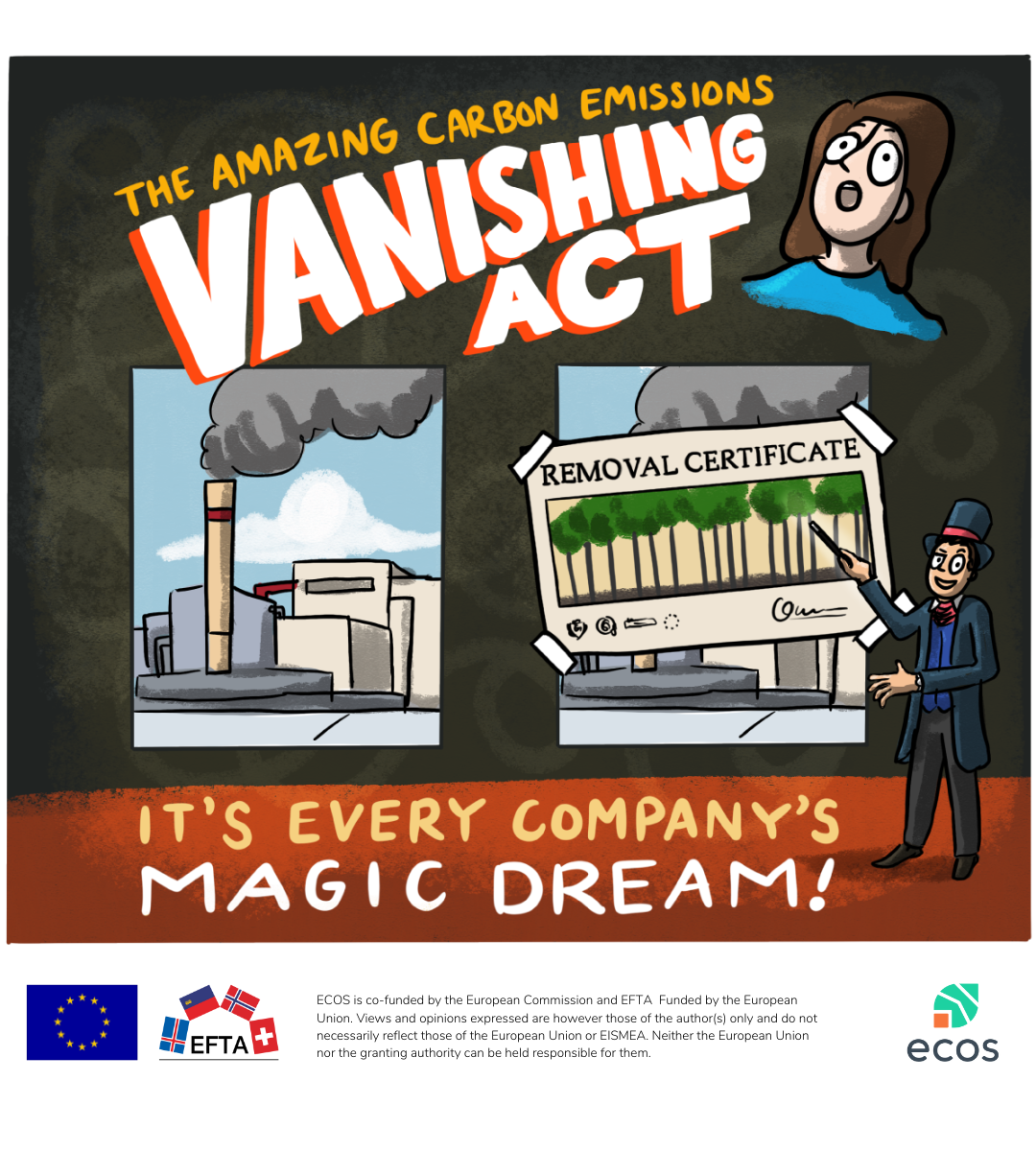New EU Carbon Removal Certification Framework – can it stop greenwashing in the carbon market?
The European Commission is about to release a proposal for carbon removal certification. Will it be the starting point of a reliable framework?

The EU has set itself on a path towards making Europe the first climate-neutral continent. To get there, all 27 EU Member States pledged to reduce emissions by at least 55% by 2030, compared to 1990 levels. Unfortunately, CO2 emissions continue to rise pushing the planet toward dangerous warming thresholds.
On 30 November, the European Commission will publish a legislative proposal for carbon removal certification – one of the key new initiatives for 2022. The proposal is driven by the need to scale up sustainable carbon removals in line with climate targets. The European Commission aims to deliver a common and reliable EU certification framework with high environmental integrity.
‘Carbon neutrality’ – is it enough?
Earlier this month, ECOS and 6 other environmental NGOs addressed a letter to the European Commission highlighting the key principles of the future Carbon Removal Certification Framework (CRCF).
If we are to achieve net zero by 2050, the science is clear: we need to reduce our emissions as a matter of priority. At the same time, we must sequester carbon from the atmosphere and into permanent storage in ecologically managed land (such as forests and wetlands) and with technological solutions, the so-called ‘carbon removals’.
Voluntary carbon markets already enable firms to buy their ‘carbon neutrality’ with so called ‘removal credits’. However, this often turns out to be greenwashing, as these credits can easily become fiction and shift the attention away from the first priority: reducing carbon emissions.
To tackle the issue, the EU must develop a strong certification framework to ensure that only real carbon removals are considered, and emissions reduction still come first. But there is still a long way to go. The proposal only sets out general principles until a new expert group is formed to decide on the specifics.
What’s expected in the proposal?
Based on what we have seen, the proposal does not clearly explain how removals are to be accounted for or rewarded, whether financially or through other incentives. There is a risk that this new framework will open the way for lenient carbon crediting schemes to sell conscience-easing credits to big polluters, such as fossil fuel companies, seeking ‘net neutrality’.
A new expert group will have the important task of developing the methodologies for accounting and certifying removals from different types of approaches (technological, land-based, product-based). The methods for accounting and certifying removals will both be critical here, and can easily make or break the system, as carbon accounting can be subject to many loopholes particularly as concerns the added value or ‘additionality’ of carbon crediting schemes. Let’s be clear: assessing the additionality of carbon removal projects is not a robust science and it is easy to overestimate the benefits.
The framework recognises the role of land managers and long-lasting products in enlarging and protecting carbon storage. While this can encourage climate-smart forestry, farming, and buildings as carbon sinks, the solutions bear significant risks of emission reversals. For instance, when forests burn, buildings are demolished, or farming practices change.
Monitoring and accounting for the risks of emission reversals and the associated liabilities will be crucial to preventing greenwashing. Land-based removals and production of long-lasting bio-based products should also be strongly tied to nature protection and restoration measures, including land management practices that enhance biodiversity and provide social safeguards.
For a real climate-neutral continent, we need a new system
‘Today’s urgent crises cannot be an excuse for backsliding or greenwashing’, United Nations Secretary-General Antonio Guterres stated while opening the COP27. We cannot agree more. A new EU system must strongly enforce the principle that emission reductions come before removals and are counted separately. Emissions must be drastically reduced, and removals cannot be used to ‘balance out’ major emitters and claim carbon neutrality.
The new proposal for Carbon Removal Certification could provide useful incentives. But it will only work if the safeguards ensure that removals do not replace emission reductions. A loose application of key principles will rubberstamp faulty removals and allow carbon neutrality claims to cheaply clear consciences, without actually being of added value to the planet.
For the new system to work, we need it to be robust and fair, but also to take a holistic view that prevents climate mitigation goals from eclipsing other sustainability priorities – such as biodiversity, material and energy sufficiency, and circularity for a just transition towards a climate-neutral European Union.

 By
By 
